Concrete walls sink into the ground at VAUMM's MNGB House in Spain
A wall of windows fronts this angular concrete house by VAUMM, which is sunken into the landscape of a sloping site in the suburbs of Gipuzkoa, Spain (+ slideshow).
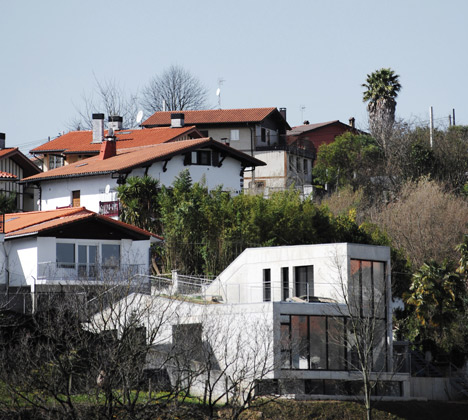
Spanish firm VAUMM – whose past projects include an outdoor elevator and a golden culinary centre – designed MNGB House on the grounds of an existing property. Their brief was to create a modern home that sits comfortably alongside its mid-century neighbour.
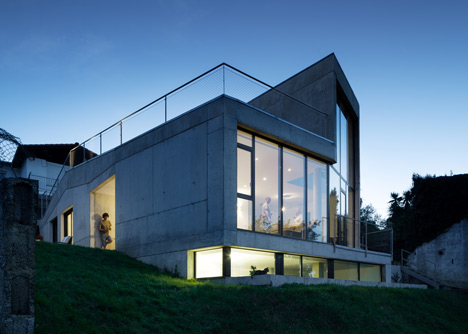
The new building features a concrete panelled facade, which is partially submerged into its sloping site. The L-shaped wall of glazing faces out to the garden at the front of the house, while smaller windows dot the remaining three elevations.
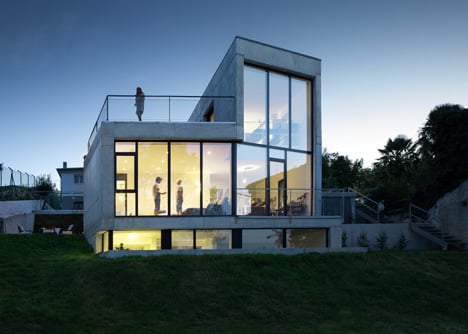
While the two properties have different owners, the sites are designed to be partially linked together, giving a feeling of continuity across the build.
"The strategy is to link them physically through a series of common elements, consisting of upper terraces and a shared courtyard," the firm explained.
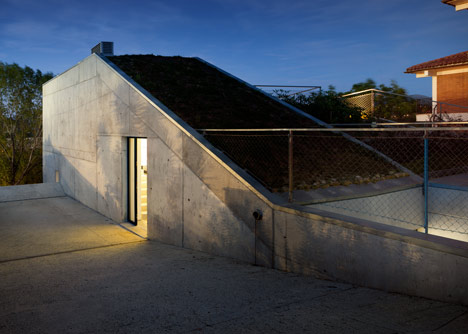
The roof steps down on one side to create a sloping terrace and garden, which helps to maintain views from the balcony of the original house. This terrace backs onto a shared parking area and courtyard for both properties, and also offers residents a view over the garden.

A doorway located at the basement level of the existing property creates an internal connection with the ground floor of the new house.
"Under those conditions, the new building is conceived as a piece adapted to the topography that somehow extends from the existing building," the architects said.
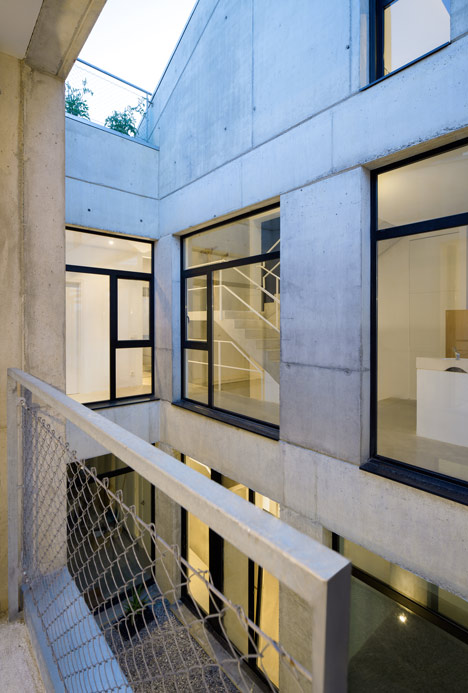
The exposed concrete walls continue into the interior, with polished terrazzo floors in the same hue as the walls. At the centre of the house, a skylight funnels natural light into an interior courtyard and separates the spaces inside the house, while a first-floor balcony looks down into the spotlit yard.
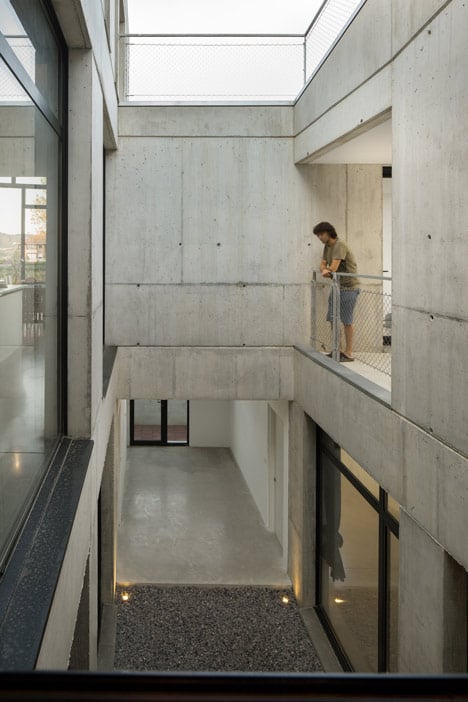
In the basement, the architects have created a series of multi-purpose rooms that can be used as storage areas or study rooms, with a row of rectangular windows that sit level with the ground.
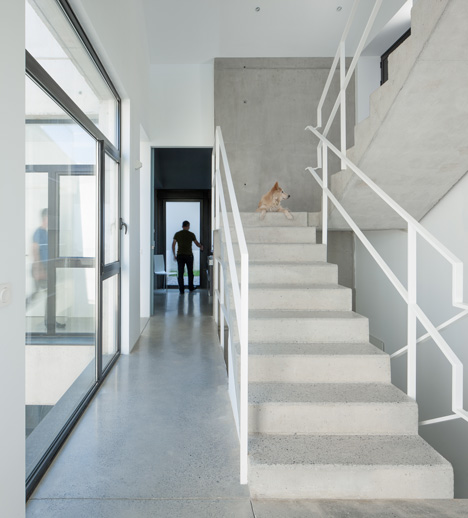
A bathroom and utility space can be found at the back of the house, where a staircase leads up to the ground floor and into an open-plan kitchen and dining space overlooking the garden.
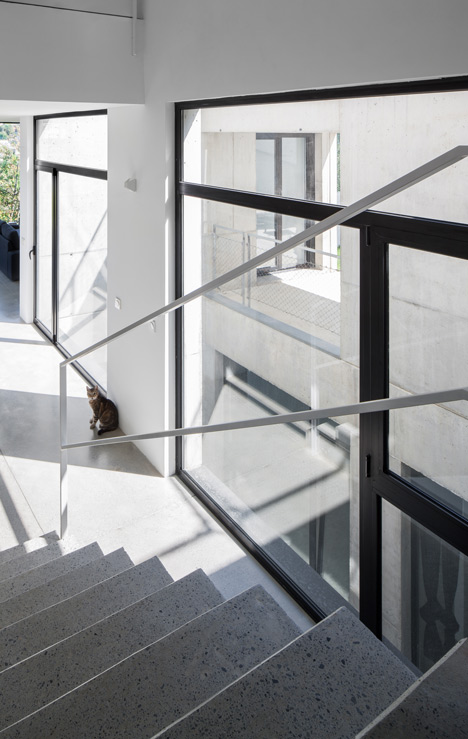
The wall of glass windows fronts the family living room, which features a sparsely designed interior. At the back of the house, a master bedroom can be accessed through a connecting corridor, while a single bedroom is oriented round the courtyard.
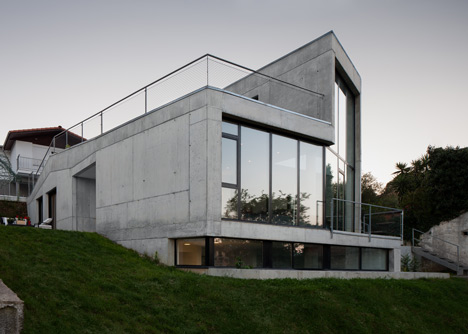
On the first floor, an office with full-height windows opens onto one of the roof terraces, allowing residents to enjoy the Mediterranean sunsets.
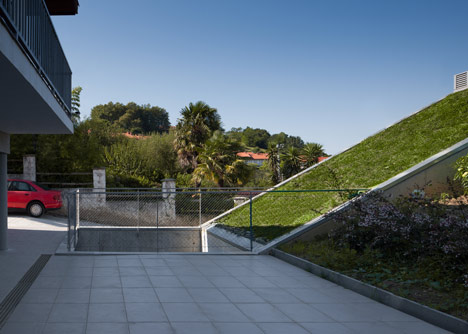
Photography is by Aitor Ortiz.
Here's some more text from Vaumm Architects:
MNGB House, Gipuzkoa, Spain
The project, situated in an urban plot of approximately 1000 square metres with a steep slope and with a pre-existing building, consists on inserting a new dwelling. Both houses share common spaces within the same plot, but will be inhabited by two different owners. The current owner has 50 per cent of the plot and the pre-existing building, and our client is the owner of the other half of the plot and the right to build the new house. Both must agree on the architecture to live together without interference.

The local plan states that the building must meet a two-family residential typology. Strictly this model assumes two houses within a single volume. Accepting this premise means attaching to the existing building, involving the views and the living space.
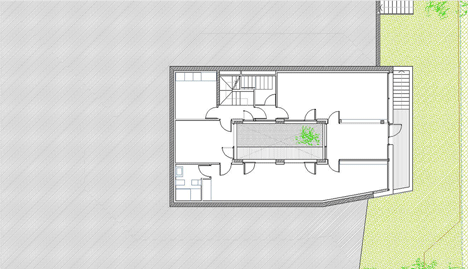
Considering that both buildings should be understood as a unit for regulatory purposes, the strategy is to link them physically through a series of common elements consisting of a shared courtyard and the upper terraces.
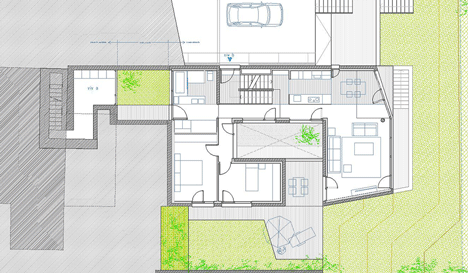
The proposal therefore focuses in the section. It redefines the different levels of the existing housing. The basement becomes ground level and so on. In this way, both buildings are framed within the allowed outline and a unitary piece.
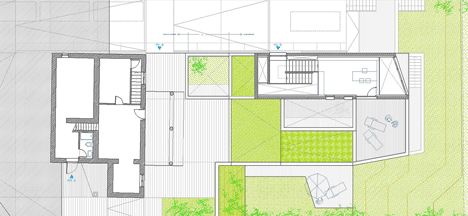
Under these conditions the new building is conceived as a piece adapted to the topography that somehow extends from the existing building, moving towards the end of the lot and descending to a lower level.
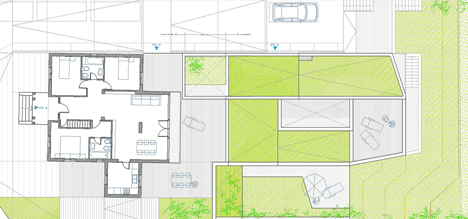
The house has a basement, ground floor and first floor. The first floor is materialised in a volume that emerges laterally on the ground of the roof of the existing dwelling. Between both houses there is no material distinction. A gap that distances both houses is created by a fold of the cover and its vegetable treatment, always allowing views over the open space.
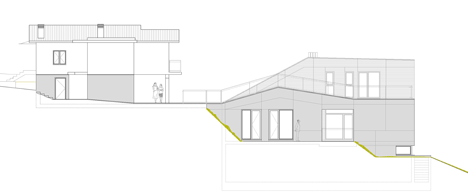
The floor of the building is organised around an interior courtyard which allows wide sights of the interior spaces. In this way, the dwelling opens to the outer space, and amplifies its size while maintaining a high degree of privacy. The dining and lounge areas turn, on the other hand, to the landscape.
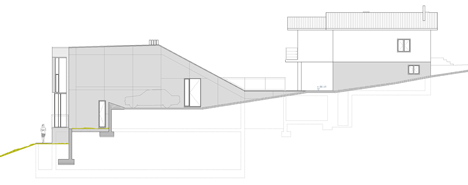
The architectural proposal negotiates an agreement between the two owners, and between them and the urban legislation, in which the proposal flexibly fits. The resulting architecture is the materialisation of this agreement.